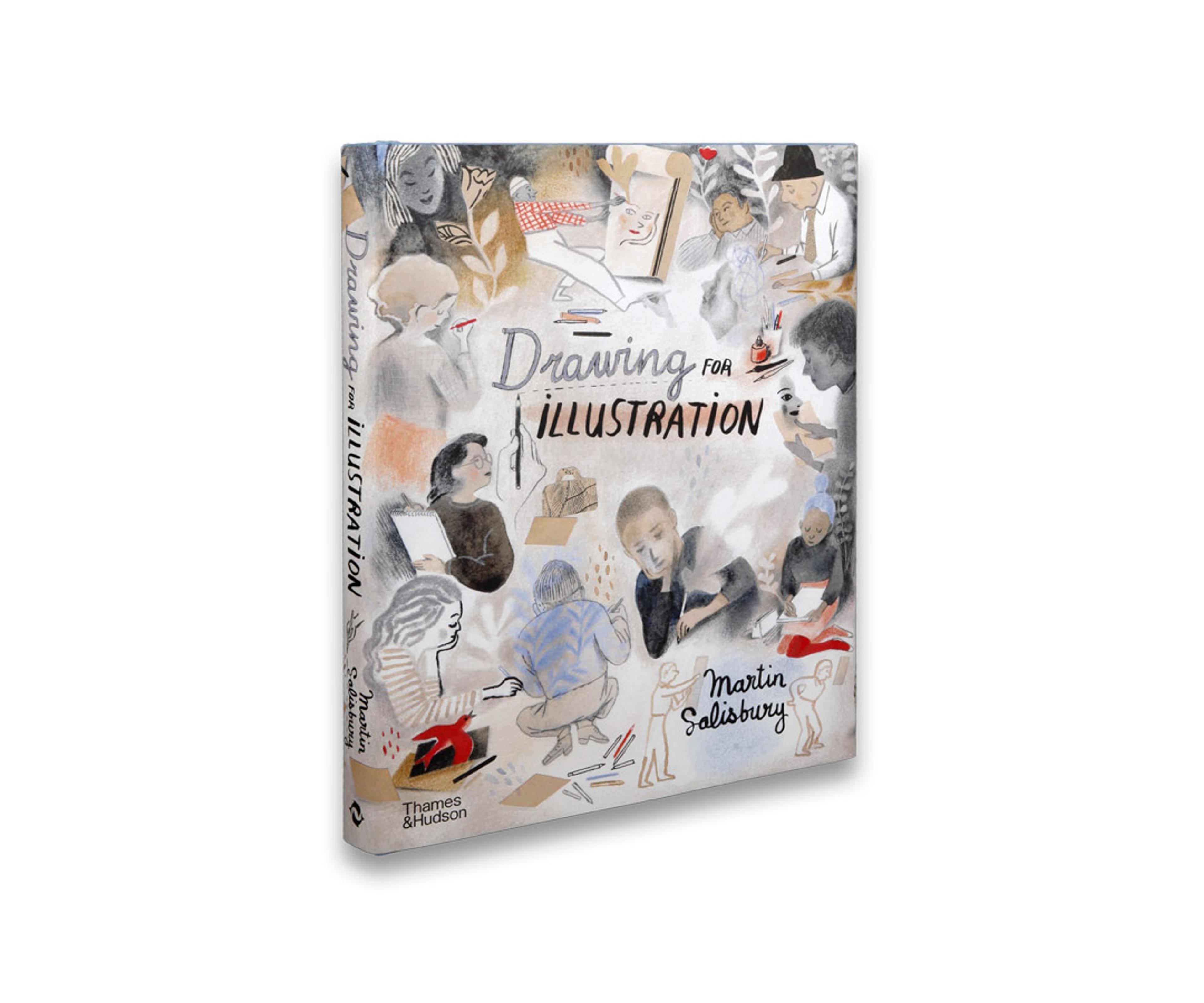Drawing for Illustration
by Tara Vidisha Ghose, Quentin Blake Centre team
Our Book of the Month for March is a richly-illustrated title with a wealth of inspiration for illustrators (and illustration fans!).
Enter our giveaway to win a copy!

Drawing for Illustration by Martin Salisbury is an expansive reference book that dives deep into the relationship between drawing and illustration. It’s enriched by a series of case studies spotlighting renowned illustrators, such as Alexis Deacon, Isabelle Arsenault, Axel Scheffler and others. Included throughout is advice for artists looking to strengthen their skills.
The book is broadly organised into four sections: each section is packed with valuable information based in art theory, history and the author’s own experience as an illustrator and educator.

The book begins by framing drawing as a complex skill that can be picked up with practice. Martin emphasises the importance of learning how to see, describing it as “a torturous process of learning to bypass the brain’s attempts to fool us into thinking we know in order to listen to what our eyes are telling us.” He also touches upon the building blocks of drawing, namely line, tone and colour, suggesting a variety of exercises to encourage the reader to explore different methods of drawing from life.
After laying this groundwork, Martin discusses the struggles associated with bridging drawing from life with imagined or remembered scenes. He explores the work of illustrators such as John Vernon Lord and Sally Dunne who use sketchbooks and journals as tools to build unique connections between observation, memory and imagination that later inform their illustration practice. As Sally Dunne puts it, “I find that details from sketchbook studies of landscapes, portraits and interiors can inspire or contribute authentically to an imagined world.”

The final section takes the discussion a step further by talking about applied illustration for picture books, editorial and more. Martin argues that at this stage, the drawn line seems to disappear, as graphic shapes, colour and alternative techniques take over. Yet, drawing continues to play a vital role in helping the illustrator explore the story or message they’re trying to communicate.

The informative illustrator case studies in each section demonstrate how various theoretical concepts translate into the real world. From Vyara Boyadjieva’s intuitive approach to drawing from life to Yann Kebi’s integration of rough sketches into editorial illustrations, the book represents the diverse ways in which drawing translates into illustration. These insights demystify the illustration process while providing the reader with plenty of knowledge and inspiration, regardless of their area of interest. It’s a must-have for any illustrator’s book shelf.